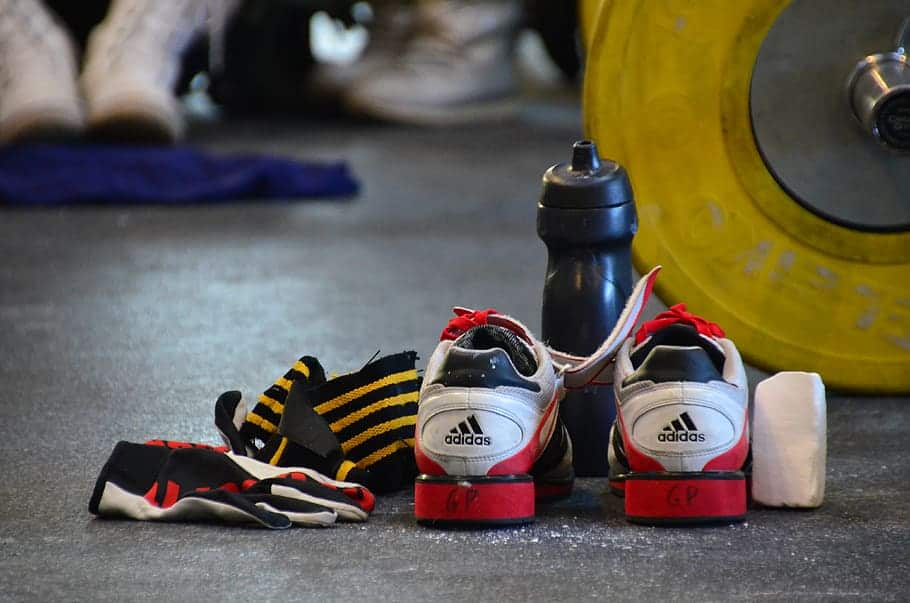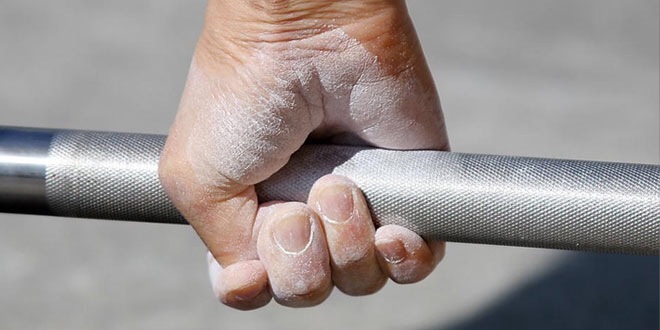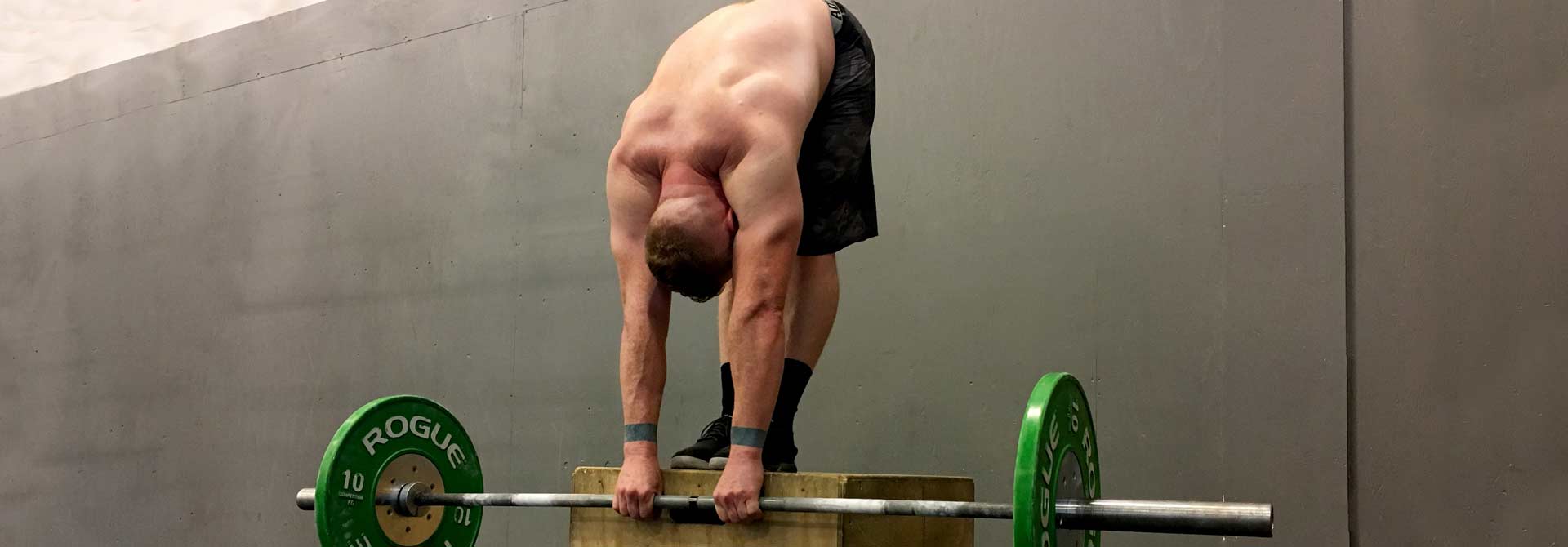When we’re comparing shoes to squat in, us powerlifters only have two options: flats, and squat shoes (heeled shoes, or weightlifting shoes). This is because most powerlifting competitions don’t allow you to lift barefoot, and because any other kind of shoe is likely an “athletic” shoe with a cushioned sole, which means more give + less balance when lifting heavy weight, which places more burden on your muscles to stabilize (and thus waste strength).
Which is the superior option between flats and squat shoes? A cursory look around the Internet will doubtlessly give you plenty of articles and videos praising squat shoes over flats for many lifters because they theoretically address a mechanical issue that plagues a lot of beginners: a dreaded lack of ankle dorsiflexion.
It’s true – squat shoes improve the range of motion in your ankles because your heels are raised, meaning your ankles aren’t neutral at the beginning of a squat with squat shoes, but instead they’re starting with slight plantar flexion.
But the thing is that most people have more than enough ankle dorsiflexion to squat to parallel with good mechanics that take equal advantage of a person’s hip extensors and knee extensors.
Do You Really Have Ankle Mobility Issues?
The mechanics of the squat will change based on the individual’s leverages and joints. A person’s best squat stance is generally dictated by the natural shape of their pelvic bone and the head of their femur, which is why some people lend themselves better towards a narrow stance and others towards a wider stance.
Meanwhile, a person’s torso to femur ratio will typically dictate their torso angle under the bar, as well as the degree of knee flexion needed to hit depth. These factors – your pelvis, your femur length, your torso length – are non-negotiable.
The shorter your femurs relative to your torso, the less ankle dorsiflexion is needed to get optimal knee and hip flexion at proper depth. The longer your femurs, the more your knees need to travel forward to balance the bar over your midfoot and keep you from falling backwards or forwards, demanding more ankle dorsiflexion.
Most of the time, however, the need for ankle dorsiflexion when hitting powerlifting depth (head of the femur just under the knee joint) really isn’t that great. Most people struggle to hit depth not because their ankle mobility sucks, but because they can’t squat yet. There are neurological adaptations that need to be put in place before you’re starting to coordinate your body properly for a clean squat.
First time squatters will usually have ugly squats – it’s not a movement we tend to do in our typical day-to-day life, and even people who squat normally don’t do barbell back squats well the first time because it’s not natural to squat to depth with a heavy load on your upper back. It takes time to adapt to this movement in such a way to truly reveal your body’s mechanical limitations. However, some beginners see themselves in the mirror, realize it’s hard to hit depth, and try to find reasons why. Ankle mobility is a commonly touted problem, so they diagnose themselves with a mechanical deficiency they might not have.
Sure, some people do lack proper ankle mobility for weightlifting and single leg squatting. But not for barbell squats. You don’t need an ass-to-grass squat when powerlifting, and most people will utilize their quads and hips effectively with practice and will discover the right torso angle to extend through the hips and knees optimally.
So, why do these shoes exist in the first place?
What’s the Point of the Heel?
Weightlifting has far greater mobility demands than powerlifting, especially in the lower body. The crux of the clean lies in getting low enough after the first and second pull to catch the weight in the squat position. Weightlifters must physically get their hips as low and close to the bar as humanly possible, and to do that, they will resort to inhuman methods – such as the exogenous heel. This piece of equipment allows for far greater forward knee travel, letting the hips shoot under the bar better.
This is not necessary for powerlifting, where depth is not reliant on getting as low as possible, but simply achieving a less-than parallel angle between the femurs and the floor.
I’ve written about squat shoes before. I’ve talked about how I haven’t used them myself. The rationale behind giving them a try is that increased hip flexion would bring your hips closer to the bar at the same depth, and allow for greater use of your quads out of the bottom of the squat. Based on what we know about squat performance, however, the difference between heeled and flat squats is negligible. Negligible.
However, there’s only limited data on this, to begin with – and it doesn’t address the impact of squat shoes on the clean, which is where they’re at their strongest – but for powerlifters who only care about a good squat, squat shoes may not bring much if any benefit if the lifter is already hitting parallel.
The keyword being “may”, as there are no controlled studies specifically trying to address one-rep max performance in flats vs heels. I’m not quite sure how you would begin to control the countless individual factors that go into a one-rep max, let alone how a flat versus heeled shoe would impact performance in individual lifters (who have likely focused training with one or the other).
Anecdotally, lifters will tell you that the only thing squat shoes can assuredly do is allow for increased knee flexion than what their ankles allow, which has hypertrophy benefits if anything else. The other benefit is comfort. Some prefer flats, some prefer heels.
While weightlifters generally experience lower back and knee injuries most often, powerlifters hurt themselves in the shoulder and lower back most of the time, with knee injuries only accounting for 9% of injuries in one study, and 11% in another. However, whether that’s on the shoes, or the explosive nature of the clean, or the depth of a weightlifter’s catch, or whether it’s completely statistically insignificant and cannot be compared, is impossible to say.
Heels as a Crutch, a.k.a. Why You Shouldn’t Diagnose Poor Mechanics
Squat shoes should not be the first thing you buy as a powerlifter. Firstly, good squat shoes are really expensive. But secondly, you should first realize your biomechanical limits and buy squat shoes once you’re comfortable with the mechanics of the back squat, rather than getting a pair in your beginner phase while you’re still working out the motor control kinks.
This is because, when poor knee and hip angles and a good morning squat are misdiagnosed as an ankle mobility issue, squat shoes become a bad crutch hiding a squat mechanics issue that isn’t being addressed through practice as it should be. There’s a certain danger behind trying to artificially increase your ankle range of motion, especially if you’re still untrained or a novice.
Once you’ve been squatting for a while, however, I do recommend picking up cheap squat shoes and experimenting. If anything, they’ll help you target your quads for hypertrophy if you struggle to increase knee flexion.
If you suspect that you have real ankle dorsiflexion issues, especially ones caused by a bone spur or a similar medical issue, please consult an orthopedic specialist for a diagnosis and real advice.





